A Simple Machines Unit Study for Homeschoolers
Teaching simple machines through hands-on, experimental lessons is a hit for children. While gathering materials takes just a bit of time, the engagement factor makes this quick and straightforward unit study worthwhile.
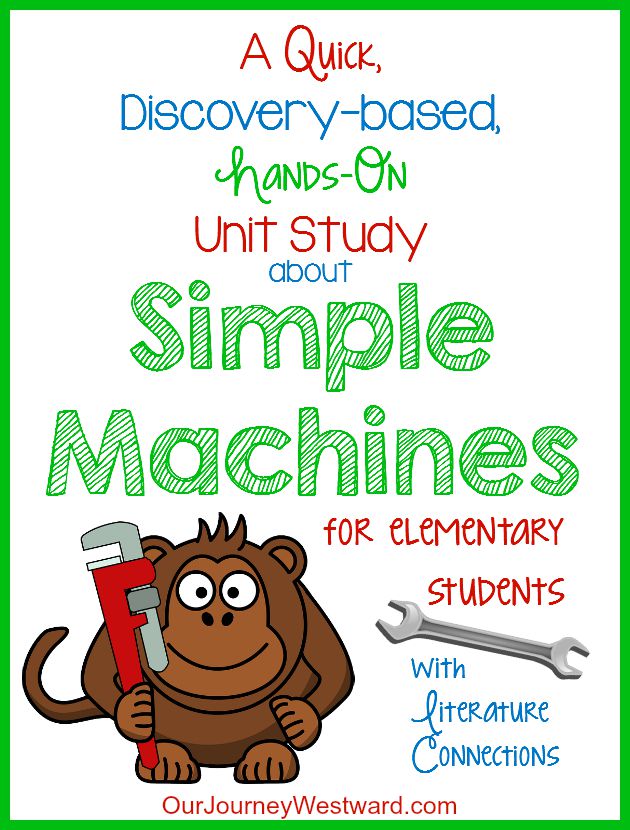
This post includes affiliate links.
Simple Machines Unit Study
Before reading the first book about simple machines, set up some little centers for self-discovery. Over the course of a few days, children visit each center and complete a few thought-provoking questions about what they learned. After visiting each center, discuss the particular machine types more thoroughly. Consider when, where, and how we use these simple/complex machines daily.
Hands-On Science Center #1 – Levers
Place hammers, can openers, bottle openers, nutcrackers, and paint can openers for children to explore through play.

Afterward, experiment with placing the fulcrum of a lever in different spots to see at which point the lever is easiest to move a pile of books. To set this up, tape three fat markers together in the shape of a triangular prism to make the fulcrum. A 3-4 foot board becomes the lever and is placed on top of the markers. A small pile of books tied together and placed on the end of the board becomes the weight you lift using the lever.
Hands-On Science Center #2 – Wedges
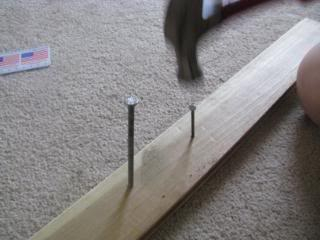
To learn about wedges, give capable children a nail with a sharp end and a nail with a blunt/flat end. Hammer both nails into a piece of scrap wood to see which nail more easily goes into the wood. Since the sharp nail has a wedge on its end, it should go into the wood much easier than the blunt nail.
Hands-On Science Center #3 – Inclined Plane
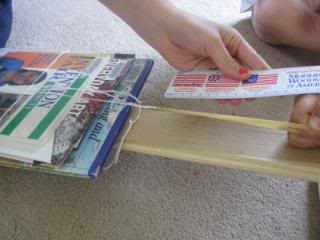
Pull a stack of books with a string tied around them up a simple ramp made from a piece of scrap wood. Then, lift the stack straight up into the air to the same level as the top of the ramp. Tie a rubber band to the string to measure the stretch length for each attempt. The rubber band doesn’t stretch as far when the books are pulled up the ramp. That means using the inclined plane requires less force than pulling the books straight up. Children can conclude the inclined plane is a helpful tool considering the lesser force necessary.
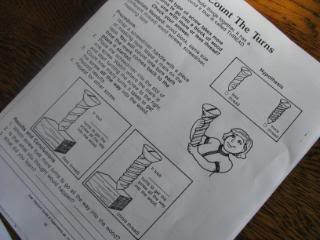
Experiment a bit more with inclined planes using two screws—one with threads very close together and one with threads far apart. See how many turns it takes to get each screw into the wood. More turns are generally required for the closer threaded screw, but the job is typically much easier than the screw with threads far apart.
Hands-On Science Center #4 – Wheel and Axle
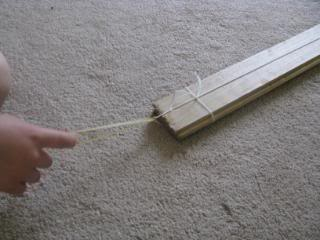
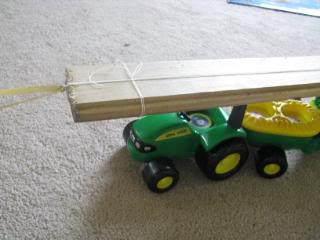
With this experiment, determine whether or not less force is required to pull a piece of wood using wheels. First, tie a string to a small piece of board and attach a rubber band to the string to pull the board. Pull the board along a carpeted floor and measure the pull length of the rubber band. Next, place the wood on a toy with wheels. Pull and measure the pull length of the rubber band. The rubber band measurement should be much shorter when pulled with the wheels. This means less force is required to move the wood.
Hands-On Science Center #5 – Gears
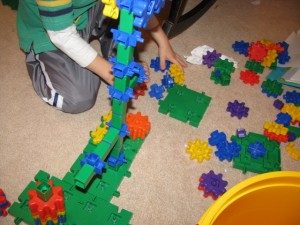
Pull out a gear set for free play to experience gears.
Hands-On Science Center #6 – Pulleys
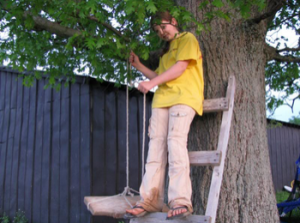
Give children simple pulleys and rope. Challenge them to create pulley systems outdoors to discover how much easier it is to lift heavy objects.
Hands-On Science Center #7 – Friction
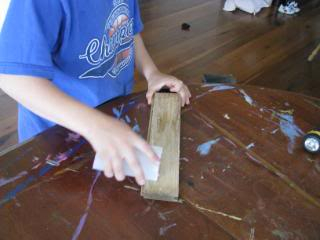
This experiment determines which materials provide the least friction when placed on scrap wood. Use four pieces of scrap wood. Rub one piece of wood on one side with dish soap. Rub another one with vegetable oil, another with wax, and another with a bar of soap. Tie a string around each piece of wood. Use the same rubber band trick to determine the pull length as each piece of wood is dragged across a table (rubbed side down). The one with the least pull length encounters the least amount of friction. The one with the most pull length encounters the most friction.
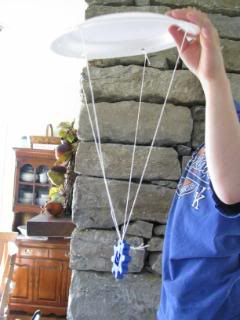
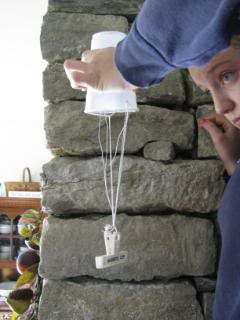
To further explore friction, assign this challenge: Design a parachute that allows for the most friction so a toy person arrives safely on the ground. Children may need to try and try again with various materials, learning from their failures, to successfully land a parachute.
Simple Machines Discovery Booklet
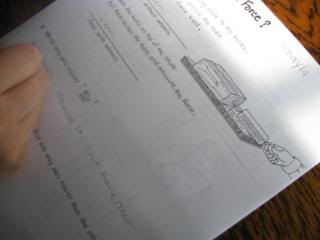
During our study, I made up a little booklet of leading questions for each center to guide my children’s discovery. Since I used so many ideas from various books I have around the house, I can’t share the booklet. It was pretty easy to make, though. Just ask your children to note experiment results and then ask open-ended questions like, “Why do you think it was easier to pull the board using wheels?” The goal isn’t correct answers at this age; it’s coming to reasonable conclusions after experimentation.
Simple Machines Books for Kids
After the self-discovery activities, read a few books that teach the science behind simple machines and friction.
Two of our favorite picture books have machines as their main characters. Consider reading them with an eye on the use of simple machines. Your children may gain an entirely new perspective on the books!
Simple Machines Learning Resources
These books are fabulous if you’re looking for some great lesson ideas for teaching simple machines! Just choose one of them, and you’ll have all the ideas you need for your own simple machine unit study.
Other Science Posts You May Like











I love these! We do “science days” here. This study would be a great fit. My son will love them.
I hope your son does! I know Eli will, too. He’s all about “let me explore to figure out some things myself.”
Awesome, awesome timing 🙂 I came to your site to find it you had done a unit on simple machines (it’s one of the first sites I go to when I’m searching for ideas on books). And Voila! Thank you for posting your work!
You are very welcome, Ann!
bonjour, J’aimerais savoir a manière dont chuter enceinte